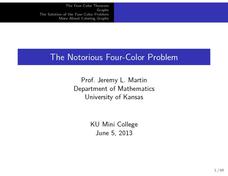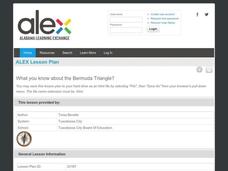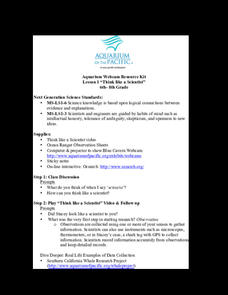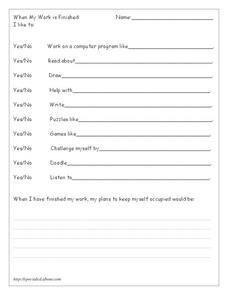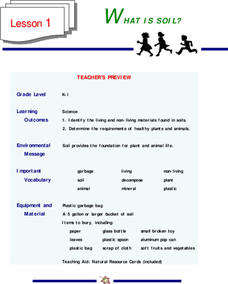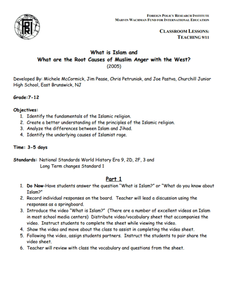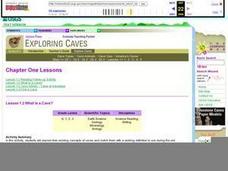Curated OER
The Notorious Four-Color Problem
Take a walk through time, 1852 to 2005, following the mathematical history, development, and solution of the Four-Color Theorem. Learners take on the role of cartographers to study a United States map that is to be...
Weebly
Cereal Box Book Report
What is is about cereal boxes that draws consumers in? Tap into the effective marketing of cereal boxes and apply those elements to a book report. Pupils cover cereal boxes with information about their chosen books. they must create a...
Foundation for a Drug-Free World
The Truth About Drugs
Teenagers hear many messages about drugs from advertisements, their peers, their teachers, and their parents. But who is lying? What is the truth? A thorough, thoughtful unit takes a purposeful look at drug education, drug culture, and...
Museum of Tolerance
Why is This True?
Are wages based on race? On gender? Class members research wages for workers according to race and gender, create graphs and charts of their data, and compute differences by percentages. They then share their findings with adults and...
Math Worksheets Land
My Favorite Animal At The Zoo Pie Graph
What is your favorite animal at the zoo? Young mathematicians answer eight multiple choice questions, based on a survey of 50 people presented in a pie graph. Additionally, the graph does not display any numbers, but rather...
While They Watched
Teaching the Holocaust
What is the difference between prejudice and discrimination? Between collaborators and bystanders? Guilt and responsibility? Prompt learners to think critically about a very complex and textured topic with an innovative packet...
Alabama Learning Exchange
What You Know About the Bermuda Triangle?
Get lost in the classifications. Using the backdrop of the Bermuda Triangle, pupils classify it by angle and side measures. They also learn information about the triangle and its history.
Aquarium of the Pacific
Think Like a Scientist
Scholars watch a video and meet a scientist who is studying sharks as she explains her observations about the sharks and provides her hypothesis to explain their behavior. Learners then act like a scientist as they watch an aquarium...
Museum of Science
Create Gas
Let's have a gas. Individuals mix baking soda and vinegar in a bottle. Learners view the interaction between the solid and the liquid and notice that a gas is formed. Scholars notice the gas inflates a balloon stretched across the mouth...
ThoughtCo
When My Work is Finished
The most chaotic time in the classroom can be when some people are finished with their work, but others aren't. A checklist and reflection worksheet reminds learners what their options are after finishing their work, including reading,...
Curated OER
What is the Role of Civil Disobedience Today?
Students examine the meaning and use of civil disobedience. They decide whether civil disobedience is a viable form of protest in contemporary times after studying the acts of Rosa Parks.
Curated OER
What is Energy?
Youngsters take a look at the foods they eat, and how they provide energy for them to do things. They look at how body uses the food energy to create movement. Pupils also look at toys/devices in the room that need electrical energy...
Curated OER
What is Sound?
Second graders discuss sound and describe them. In this investigative lesson students observe sound through their eyes, bodies and ears.
Curated OER
What is Soil?
Pupils study living and non-living materials that are found in soil. They study the things required by plants and animals to remain healthy. They design a collage of sand, stones, leaves and other natural items.
Curated OER
What is a Biography?
Investigate biographies with your class. Compare autobiographies and biographies of Martin Luther King, Jr. as an example. Learners explore the factual components that make up a biography and locate several biographies of notable...
Curated OER
What is Comfortable and Uncomfortable Touch?
Students fill in a worksheet that shows their ability to determine the difference between safe and unsafe touch after a counselor demonstrates with stuffed animals. They cut and paste cards that show situations and place them in the...
Foreign Policy Research Institute
What is Islam and What are the Root Causes of Muslim Anger with the West?
A video and magazine article provide the foundation for learning about Islam and why some Muslims are angry with Western society. In groups, students identify the causes of hostility and prepare a presentation that explains them. While...
Teach-nology
What Went Bump in the Night?
What would you do if you found a monster watching your TV? Take a walk on the scary side with a fun cloze reading activity. As kids read the passage, they use the words on the bottom of the page to fill in the eight blank...
Curated OER
What Is A Cave?
Students explore their existing concepts of caves and match them with a working definition to use during the unit. They name the two types of rock formations in which most American caves occur, and define "show cave" and "wild cave."
Curated OER
What is Culture?
Sixth graders study ancient cultures of the world. They describe the meaning of culture. Students distinguish between the material and non-material aspects of culture. They create a collage identifying the material and non-material...
Curated OER
What is Motion?
Prior to beginning a math or physical science lesson on motion, use this presentation to define the concepts of motion, rate, velocity, and speed. This resource lacks concrete examples but could be useful as discussion starter.
Curated OER
What Is El Niño?
Students access information at remote sites using telecommunications, identify impacts by reviewing past El Ni??o events, make and use scale drawings, maps, and maps symbols to find locations and describe relationships.
Curated OER
Lesson 10 What is an Initial Public Offering (IPO)?
Pupils understand the difference between primary and secondary stock markets. Through the activities in this instructional activity, students predict the next best time to invest in IPOs for the Global Stock Game.
Curated OER
What Is An Insect?
Students find and classify insects. They collect insects, study them with a hand lens and identify its body parts. Afterwards, they discus various types of insects and thier Orders such as beetles, butterflies and moths, grasshoppers, etc.
Other popular searches
- What Is Inauguration
- What Is an Autobiography
- What Is Veterans Day
- What Is Democracy
- What Is Science
- What Is Gravity
- What Is Algebraic Expression
- What Is a Memoir
- What Is Culture
- What Is Anthropology
- What Is Contemporary Music
- What Is Home Economics
